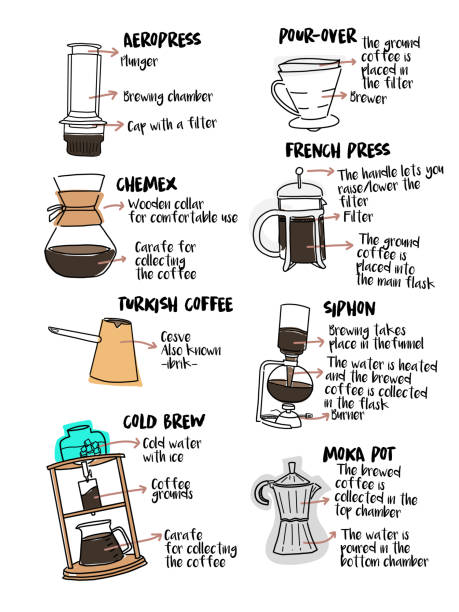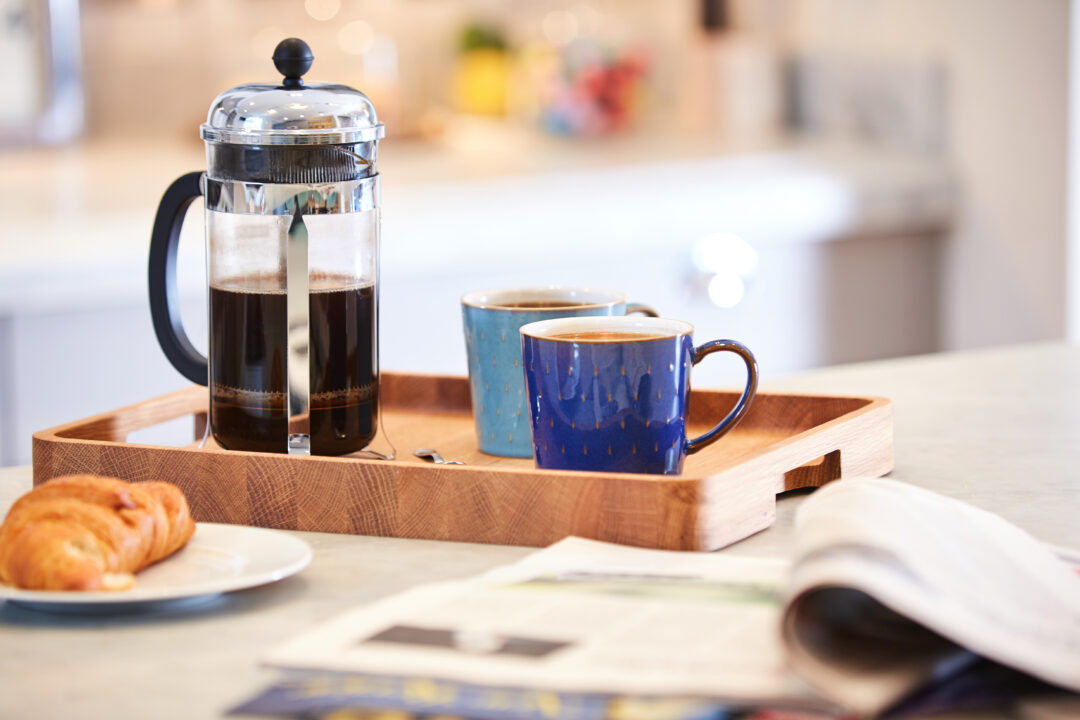The Science Behind Coffee Developing: Exactly How Temperature Level and Time Affect Your Beverage
Comprehending the science behind coffee brewing reveals that temperature and time are not simple variables however crucial elements that determine the beverage's taste account and overall high quality. The ideal developing temperature level commonly falls in between 195 ° F and 205 ° F, while the period of removal varies substantially throughout various methods. This interaction of elements can result in a cup that is either delightful or frustrating. As we explore the nuances of these elements, the question occurs: how can one successfully balance temperature level and time to achieve that excellent brew?
The Chemistry of Coffee Removal
The chemistry of coffee extraction delves right into the intricate procedures that transform raw coffee beans into the aromatic beverage taken pleasure in worldwide. This change largely involves the solubility of various compounds existing in the beans, which are affected by variables such as work dimension, water high quality, and the developing technique employed.
Throughout the brewing process, warm water functions as a solvent, extracting soluble substances, consisting of caffeine, acids, lipids, and sugars, from the coffee premises. Each compound adds to the flavor profile, aroma, and body of the last drink. Acids are liable for zesty and intense notes, while oils add to a rich mouthfeel.
The removal procedure is not uniform; different substances dissolve at different prices. The preliminary stages of developing extract acids and sugars, bring about a pleasurable acidity, while extended removal can cause resentment because of over-extraction of undesirable compounds. Comprehending these chemical communications is vital for maximizing developing methods, as the equilibrium in between removal time and water temperature can considerably affect the general high quality of the coffee. Eventually, mastering the chemistry of coffee extraction is key to achieving a all-round and flavorful cup.
Suitable Brewing Temperatures
Finding the appropriate developing temperature level is crucial for opening the full potential of coffee tastes and scents - coffee brewing methods. Research study indicates that the optimum variety for brewing coffee exists between 195 ° F to 205 ° F(90 ° C to 96 ° C) Within this range, the removal process effectively liquifies the desirable soluble substances in coffee beans, causing a savory and balanced mug
Brewing at reduced temperatures, such as listed below 195 ° F(90 ° C ), may cause under-extraction, producing an acidic and weak mixture with low-key tastes. Alternatively, developing at temperature levels surpassing 205 ° F(96 ° C) can lead to over-extraction, generating a bitter and severe taste as a result of the excessive dissolution of unwanted compounds, such as tannins.
Additionally, the ideal developing temperature can differ depending on the coffee bean kind and roast degree. Lighter roasts usually benefit from somewhat greater temperature levels to boost their complex flavor accounts, while darker roasts might be better suited to lower temperature levels to minimize bitterness.
Ultimately, maintaining precision in brewing temperatures is important for attaining an unified equilibrium of flavors, making sure that every mug of coffee supplies an enjoyable sensory experience.
Influence of Developing Time
Developing time plays a critical role in determining the flavor account and general high quality of coffee. Shorter developing times can result in under-extraction, leading to a weak or sour taste, as not enough soluble substances are liquified.
Optimal developing time differs depending upon the method made use of and the work size of the coffee. A French press normally requires concerning four mins, while espresso removal is usually completed within 25 to 30 secs. It is vital to calibrate developing time in conjunction with various other variables, such as water temperature and coffee-to-water proportion, to accomplish the wanted flavor account.
Recognizing the influence of developing time enables coffee fanatics to refine their developing techniques, eventually enhancing the sensory experience of their mug (coffee brewing methods). With careful interest to this variable, one can open the full possibility of the coffee, exposing its one-of-a-kind qualities and subtleties
Brewing Techniques and Their Results

For circumstances, approaches like French press and cold mixture enable a much longer steeping time, causing a fuller body and durable taste as a result of enhanced removal of oils and soluble solids. Alternatively, espresso developing makes use of high pressure and a shorter extraction time, creating a concentrated shot that highlights extreme tastes website link and an abundant crema.
Pour-over techniques, such as Chemex or V60, offer a more controlled extraction procedure, permitting the brewer to adjust flow rate and water distribution, which can enhance brightness and clarity. Meanwhile, percolation techniques cycle water through the coffee grounds multiple times, leading to a stronger, frequently bitter flavor.
Last but not least, the usage of paper filters versus steel filters can likewise impact the final preference; paper filters commonly produce a cleaner mug by capturing oils and fine particles, while steel filters enable more oils to pass through, contributing to a fuller mouthfeel - coffee brewing methods. Understanding these subtleties can boost the coffee experience considerably
Tips for Improving Your Mixture
A well-executed mixture can transform also the easiest coffee into a remarkable experience. Grind the beans simply before making to make the most of quality, guaranteeing the work dimension matches your developing method-- coarser for French press and finer for coffee.
Water quality plays a critical function; usage filtered water without impurities. The suitable brewing temperature varies between 195 ° F and 205 ° F(90 ° C to 96 webpage ° C ) Also hot can swelter the coffee, while too great might under-extract flavors.
Timing is similarly important. For immersion techniques, soaking for three to five mins is optimum, whereas drip approaches commonly take around five minutes. Trying out brew times to find your recommended strength.

Final Thought
In recap, the detailed partnership between temperature and time is critical in the coffee brewing page process. Abiding by optimal brewing temperatures between 195 ° F and 205 ° F, alongside precise timing tailored to each method, ensures the desired flavor profile is achieved. Understanding these clinical concepts equips individuals to fine-tune their brewing techniques, ultimately leading to an extra well balanced and pleasurable coffee experience. Mastery of these factors is important for any type of coffee lover seeking quality in their drink.
Comprehending the science behind coffee developing exposes that temperature level and time are not mere variables yet essential aspects that determine the beverage's taste profile and overall quality. Understanding these chemical interactions is crucial for maximizing brewing techniques, as the equilibrium in between extraction time and water temperature level can substantially influence the general high quality of the coffee.Brewing time plays an essential role in determining the flavor account and overall top quality of coffee. By focusing on these components-- bean high quality, grind dimension, water temperature, soaking time, and proportion-- you can elevate your coffee developing process, resulting in a continually exceptional mug.
In summary, the elaborate partnership between temperature level and time is critical in the coffee developing procedure.